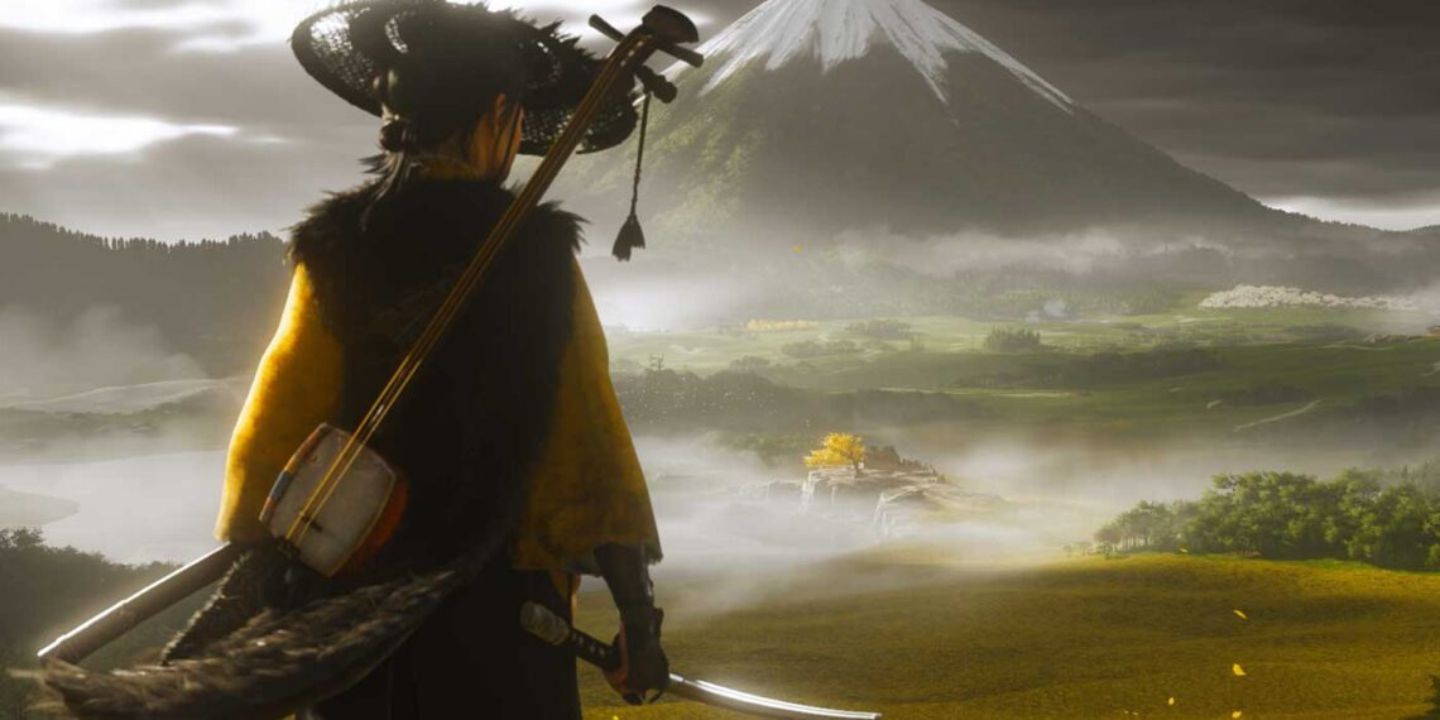In modern gaming, visuals are just as important as gameplay. With breathtaking landscapes, cinematic sword duels, and atmospheric weather effects, Ghost of Yotei is not only a samurai-inspired action-adventure—it’s also a visual journey. Beyond fighting and exploration, the game gives players a creative tool to pause, frame, and capture their favorite in-game moments: Photo Mode.
Unlike ordinary screenshots, Photo Mode lets you freeze time, reposition the camera, adjust lighting, and even control environmental effects like wind or particles. Whether you’re a casual player wanting to save a memory or a content creator aiming for cinematic captures, Photo Mode in Ghost of Yotei is designed to unleash your creativity.
This guide will walk you through everything you need to know about Photo Mode: how to activate it, use its controls, apply filters and effects, and polish your images like a pro.
What Is Photo Mode in Ghost of Yotei?
Photo Mode is an in-game photography feature that transforms your controller into a cinematic camera rig. By pausing action and opening advanced tools, you can:
- Frame your character, enemies, or landscapes from unique angles.
- Adjust lighting, filters, and time of day.
- Add atmospheric details such as wind, particles, or cinematic bars.
- Pose characters or shift facial expressions to add narrative weight.
Where many games only let you snap simple screenshots, Ghost of Yotei pushes it further, giving you film-like control over mood, environment, and storytelling.
How to Enter Photo Mode
Accessing Photo Mode in Ghost of Yotei is simple:
- Pause the Game – Hit the pause/menu button.
- Select “Photo Mode” or “Camera” – Usually found in the pause menu.
- Action Freezes, Environment Flows – Time stops for characters and combat, but subtle animations (leaves blowing, fog drifting, or particles floating) remain for realism.
- Camera Setup Begins – You’ll see your default view, which you can then reposition and fine-tune.
This instant transition makes it easy to capture a duel, a dramatic vista, or a quiet moment without breaking immersion.
Essential Camera Controls
Just like a real photographer, controlling your digital lens is the foundation of a great shot. Ghost of Yotei’s Photo Mode gives you tools to master perspective and focus:
- Pan, Tilt, and Zoom – Rotate or pull the camera closer/farther to find the perfect angle.
- Camera Movement – Move left, right, up, or down for better composition.
- Focus & Depth of Field – Choose which object or character stays sharp while blurring the background or foreground. Great for cinematic portraits.
- Field of View (FOV) – Widen your scope to capture landscapes or narrow it to highlight intimate details.
- Exposure & Brightness – Adjust lighting balance. Too bright loses contrast; too dark hides detail. Aim for balance.
Pro Tip: Experiment with low angles (for heroic shots) and high angles (for vulnerability or scale).
Creative Effects You Can Apply
Once your framing feels solid, it’s time to unleash creativity. Ghost of Yotei’s Photo Mode includes a wide array of artistic tools:
🎨 Color Grading & Presets
Apply filters that change mood instantly—vivid saturation for dramatic duels, sepia for nostalgic vibes, or black-and-white for a Kurosawa-inspired aesthetic.
🍃 Wind Direction & Speed
Control the flow of nature itself. Decide which way leaves, grass, and robes sway, and how fast. A soft breeze creates calm, while strong gusts dramatize action.
🌸 Particles
Add cherry blossoms, falling leaves, drifting snow, or glowing fireflies to enhance atmosphere. Adjust their density to avoid clutter.
🌅 Time of Day & Lighting
Shift your scene from sunrise glow to moonlit mystery. Lighting alters shadow depth, color warmth, and emotional tone.
😀 Character Expressions & Poses
If supported, tweak your protagonist’s expression—serene, fierce, smiling, or battle-ready. This small detail adds storytelling weight.
🎬 Cinematic Bars & Guides
Enable film-style black bars or grid overlays (rule of thirds, golden ratio). These guides help frame subjects more artistically.
Pro Tips for Capturing Stunning Shots
To make your screenshots stand out, follow these advanced techniques:
- Anchor with Landmarks – Mountains, temples, rivers, or forests create natural frames.
- Use Depth of Field Wisely – Blur less important areas so focus stays on your subject.
- Balance Particle Effects – A few petals feel elegant; too many can overwhelm.
- Match Weather to Mood – Rain for melancholy, sun for triumph, fog for mystery.
- Layer Your Adjustments – Start broad (lighting, filter), then fine-tune (particles, exposure).
- Mind Your Edges – Avoid stray tree branches or awkward cutoffs in the frame.
- Save Multiple Variations – Try one bright, one moody, one close-up. Review later to pick the best.
Advanced Use: Cinematic Shots & Keyframes
Ghost of Yotei may include advanced cinematic capture tools, such as animated camera paths. These allow you to create slow pans, sweeping zooms, or dramatic dolly shots while the world remains partially animated.
- Set Keyframes – Mark a starting and ending point for the camera.
- Smooth Transition – The system interpolates a fluid motion between them.
- Combine with Environment Motion – Wind, flowing rivers, or drifting fog continue to move, giving life to your scene.
This transforms Photo Mode from a static screenshot tool into a virtual cinematography kit. Perfect for content creators or fans who love making mini-movies.
Saving, Exporting, and Sharing
Once your masterpiece is ready, you’ll want to keep and share it.
- Save in Game – Use the “Save Photo” button to store your shot.
- Export Format & Resolution – Always choose the highest resolution (preferably 4K) for crisp results.
- Platform Sharing – Upload directly through PlayStation, Xbox, or PC platforms.
- Social Media Showcase – Twitter, Instagram, and gaming forums are great for showing off your work.
- External Editing – Touch up contrast or colors with Photoshop or Lightroom, but don’t overdo it—keep the essence of the in-game capture.
Why Photo Mode Matters in Ghost of Yotei
Beyond fun, Photo Mode serves deeper purposes:
- Storytelling – Players can craft their own narratives through staged shots.
- Community Creativity – Shared images help the fan base bond and showcase talent.
- Replay Value – Even after finishing the story, Photo Mode invites players back just to explore visuals.
- Personal Memories – Screenshots become digital keepsakes of epic battles and serene explorations.
Comparing Ghost of Yotei’s Photo Mode to Other Games
Photo Mode is common in modern titles, but Ghost of Yotei stands out:
- Ghost of Tsushima – Known for cherry blossoms and cinematic duels, its Photo Mode inspired Yotei’s expanded tools.
- Horizon Forbidden West – Advanced character poses and particle control, similar in spirit.
- The Last of Us Part II – Focuses on dramatic lighting and emotional expressions.
- Assassin’s Creed Valhalla – Great for landscapes, though less cinematic.
Ghost of Yotei combines the artistic freedom of Tsushima with the technical detail of Horizon, offering one of the richest Photo Modes to date.
Common Mistakes to Avoid
Even with powerful tools, small missteps can ruin a shot:
- Overusing Filters – Too strong a filter can wash out details.
- Cluttered Frames – Too many effects (wind + particles + bars) may distract from the subject.
- Unclear Focus – If everything is sharp, nothing stands out. Use depth of field.
- Ignoring Edges – Always scan corners for distracting elements.
Conclusion
Photo Mode in Ghost of Yotei is more than just a screenshot tool—it’s a creative playground. By mastering camera controls, experimenting with lighting, and adding artistic touches like particles or cinematic bars, you can transform your journey into a personal art gallery.
Whether you’re immortalizing a samurai duel under a stormy sky or capturing a quiet sunrise in the mountains, Ghost of Yotei empowers you to share your adventure in cinematic style.
With practice, patience, and creativity, you won’t just take photos—you’ll craft stories.
Read Also:

